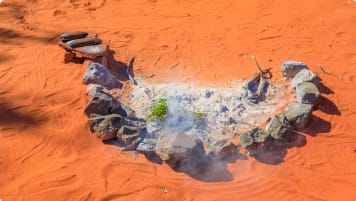19th Century South Australian Copper Triangle
Learn on a small group tour for couples and senior travellers for couples and solo travellers about the history of South Australian copper. Explore the Eyre peninsula, Lake Gardiner as well as Burra and the Flinders ranges.
6 Jul 21 · 16 mins read

The Leyshon Joneses and the South Australian Copper Smelting Industry
By Marco Stojanovik
The early mining industry in South Australia during the second half of the 19th century could not have prospered without the decisive role played by Welsh smeltermen. Coming to Australia during an industrial period known as the Swansea Moment, they introduced the Welsh smelting method to the colony, changing its economic trajectory forever.
By the end of the 18th century, Swansea had become the first industrial region in Wales and the international centre of copper smelting, the world’s first globally integrated heavy industry. Over the next half century, the copper industry of the Swansea district extended around the globe, with Welsh smelting works sourcing ores, regulus and rough copper from Europe, Cuba and Mexico, Colombia, Peru, and Chile in South America, and from South Africa, Australia and New Zealand.
During that period experienced Welsh smeltermen were engaged to implant the Welsh method of copper smelting on distant industrial landscapes. In South Australia, the most prominent of these smeltermen were Leyshon Jones Sr. and his son Leyshon Jones Jr. Between 1848 and 1877, they managed the three largest smelting works in the colony in Burra, Kapunda, and Wallaroo. Having learnt their trade in the copper smelting district of South Wales, their combined experience in the Welsh smelting process proved vital in the formative decades of the colony’s mining industries.
This article explores the roles played by the Joneses in introducing the Swansea method of copper smelting to South Australia. It is intended as background information for Odyssey Traveller’s tours to copper mining region in South Australia. During our Tour of the Southern States of Australia we visit the historic copper mining town of Burra. Meanwhile, our Tour of the Eyre & Yorke Peninsulas visits Wallaroo, Kadina, and Moonta, otherwise known the ‘copper triangle’ on the copper coast. Each small group tour is limited to 15 people and is designed for mature and senior travellers, travelling as a couple or single traveller.
Much of the information used in this article is sourced from G. J. Drew’s book The Leyshon Joneses.
Leyshon Jones Sr.
Leyshon Jones Sr. was born in 1809, the illegitimate son of Reverend Leyshon Jones and Mary Richards and baptised in 1818 at Neath, Wales, where he lived with his mother. Neath was a crossing place on the River Neath about 5km inland and had existed as a settlement since Roman times.
With the arrival of the Industrial Revolution, Neath became an industrial town with coal mining, iron and non-ferrous metal smelting a major source of employment. There is little doubt that Leyshon Sr. began his time in the Welsh smelting industry at Neath in the 1820s and thus worked in one of two works: the Ines Royal Copper Works (later termed the Neath Abbey Copper Works) or the Crown Copper Works.
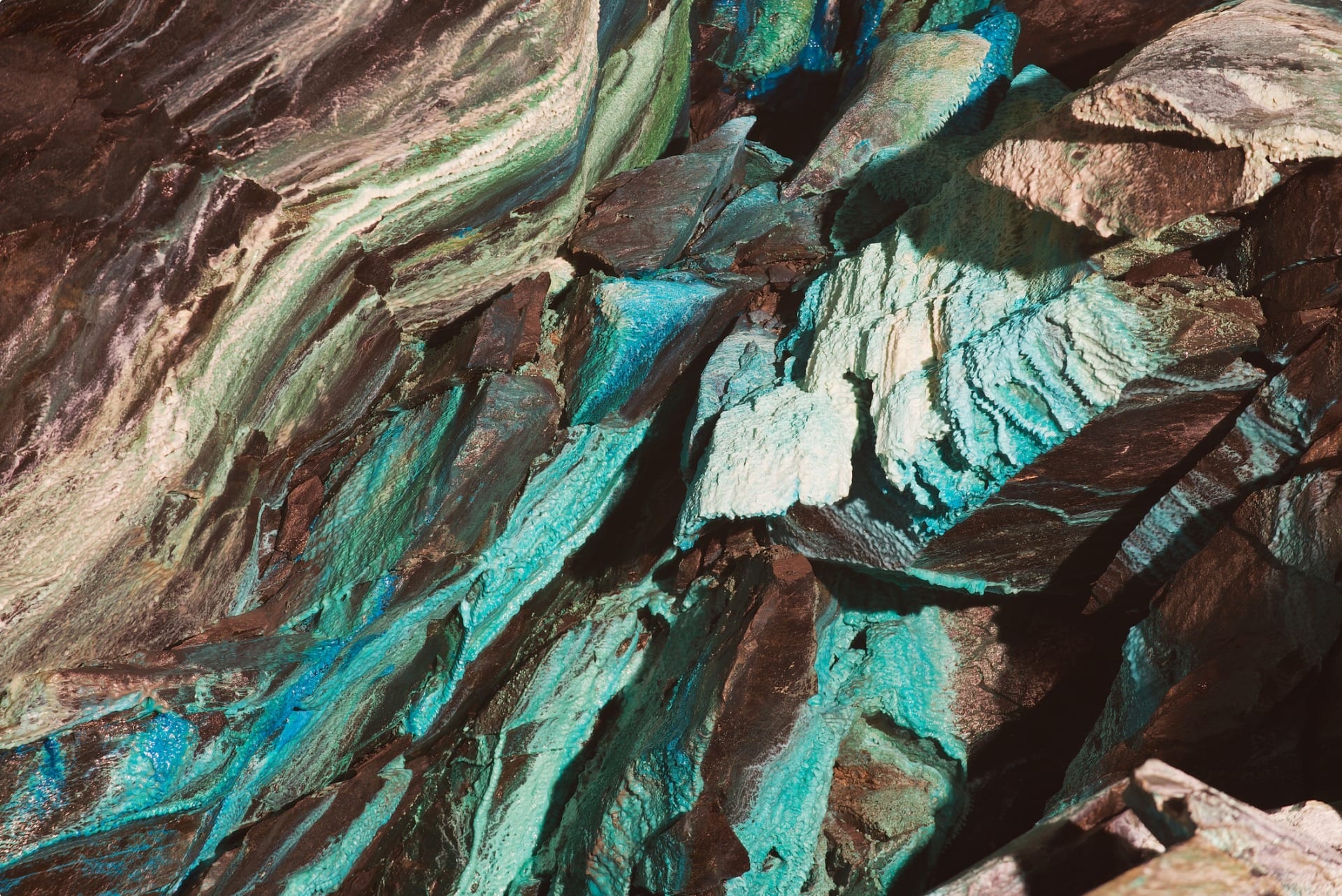
Leyshon Sr. married Mary Griffith in August 1833 and had two children. There is no record of the birth of their first child Mary, who was born in about 1834, which might suggest that it may have been a marriage of necessity. Their second child, Leyshon Jr., was born at Neath in February 1846.
By 1841, Leyshon Sr. and his family had moved to the village of Cwmavon in the lower Avon valley, about 4km from the coast and 5 km south-east of their previous home in Neath. Cwmavon has an industrial history dating from the early 19th century due to the discovery of iron and coal on the hills that surround the village.
But it was copper smelting that made Cwmavon prosperous during the 19th century, its thriving works attracting many new workers, including Leyshon Johns Sr. and his family, to the village. From 1800 to 1841, its population boomed from several hundred to 2500, as it was transformed from an area of small farms to an industrial complex similar to those in the Swansea and Neath valleys.
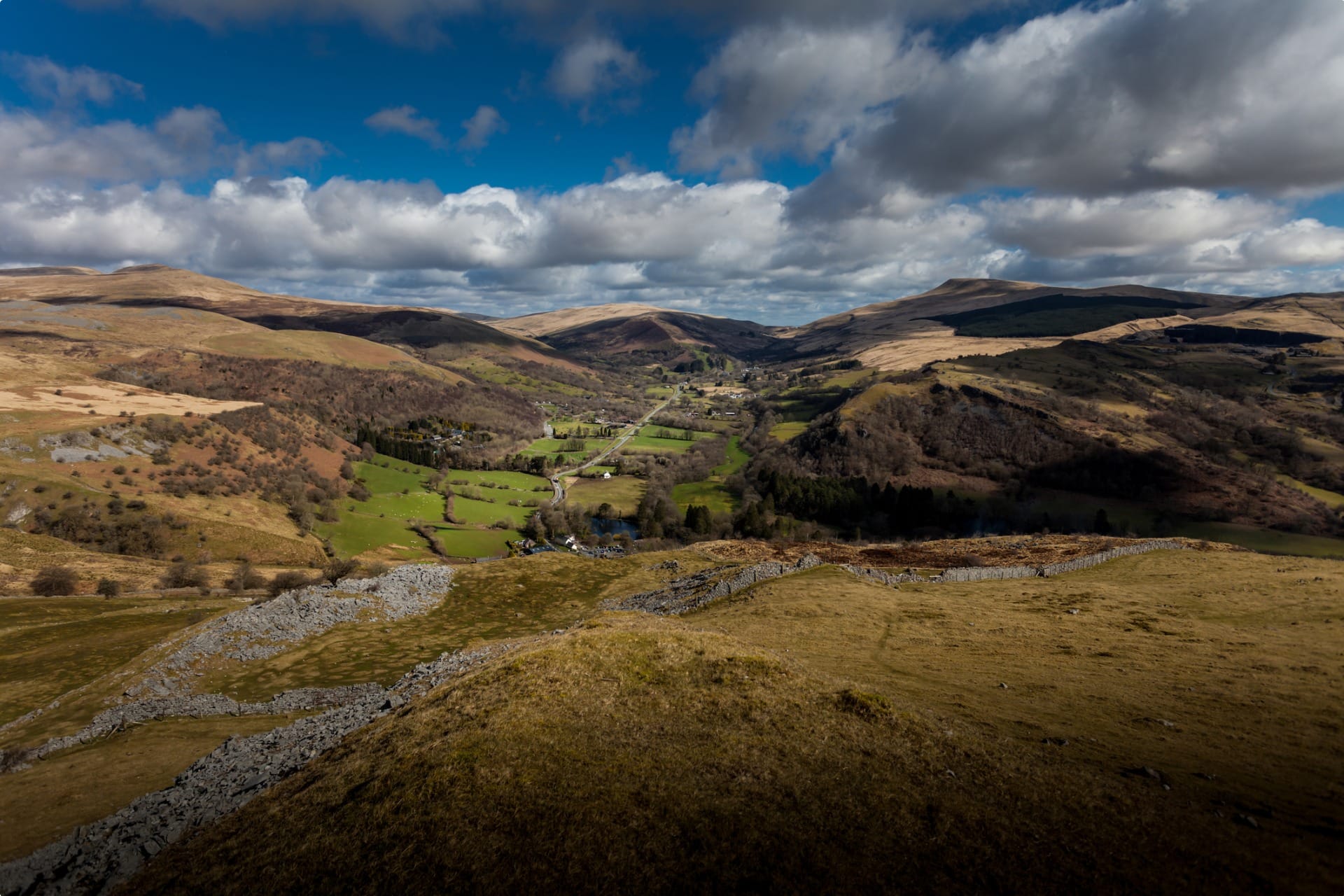
By 1848, however, the English Copper Company, which had purchased the Cwmavon Copper Works, was in financial trouble resulting in the works being supervised by their main creditor, the Bank of England. This may be the reason why Leyshon Sr. accepted an offer from the Patent Copper Company (PCC) to travel to Burra, South Australia, to assist in the establishing of a smelting works.
In early June that year, Leyshon Sr., along with a party of 24 other Welsh swelter men, officers, and materials, departed from Swansea aboard the Richardson bound for South Australia. The 25 sweltermen, tasked with setting up and operating the smelting works, were indentured to the PCC for seven years dating from their individual signing on dates prior to the departure of the Richardson.
The ship arrived at Port Adelaide on 3 October 1948. Of the workforce of 25 men, only nine had brought their families with them, suggesting that some had been engaged at too short notice to arrange their families to come with them. Leyshon Sr. was one of these men.
No arrangement had yet been made to reunite the family during the first few months at Burra, before a shattering cholera epidemic struck south Wales in the summer of 1849. The Neath district recorded 735 deaths from late May to October, one of these being Mary Jones. Leyshon Sr. would not see his son until 1855 when he arrived in South Australia but never saw his daughter again as she presumably married and remained in Wales.
Burra Burra: The Monster Mine
In 1845, two shepherds discovered Copper ore a few kilometres apart near Burra Creek, 160 km north of Adelaide. To acquire the mineral rights, two rival syndicates – a group of wealthy capitalists (known as “the nobs”) and a group of shopkeepers, merchants and the South Australian Mining Association (known as the “snobs”) – jointly purchased a special survey of 20,000 acres for £20,000.
After purchase, the survey was laid out to incorporate the two discoveries, one in each half, and each party drew lots to determine the ownership of the two mines. The nobs drew the southern section establishing the Princess Royal Mine and the snobs the northern section establishing the Burra Burra, also known as The Monster Mine.
The copper reserves soon proved shallow at the Princess Royal Mine, forcing its closure in 1851. The Burra Mine, on the other hand, produced unbelievable results, rapidly developing into one of the great copper mines in the world. During its first five years of operation more than 54,000 tons of dressed ore were raised, of which 31,000 tons were exported for sale and 8,660 tons were sold in the colony. By 1850, it was the largest metal mine in Australia, remaining so until the opening of the Wallaroo and Moonta Mines in the 1860s.
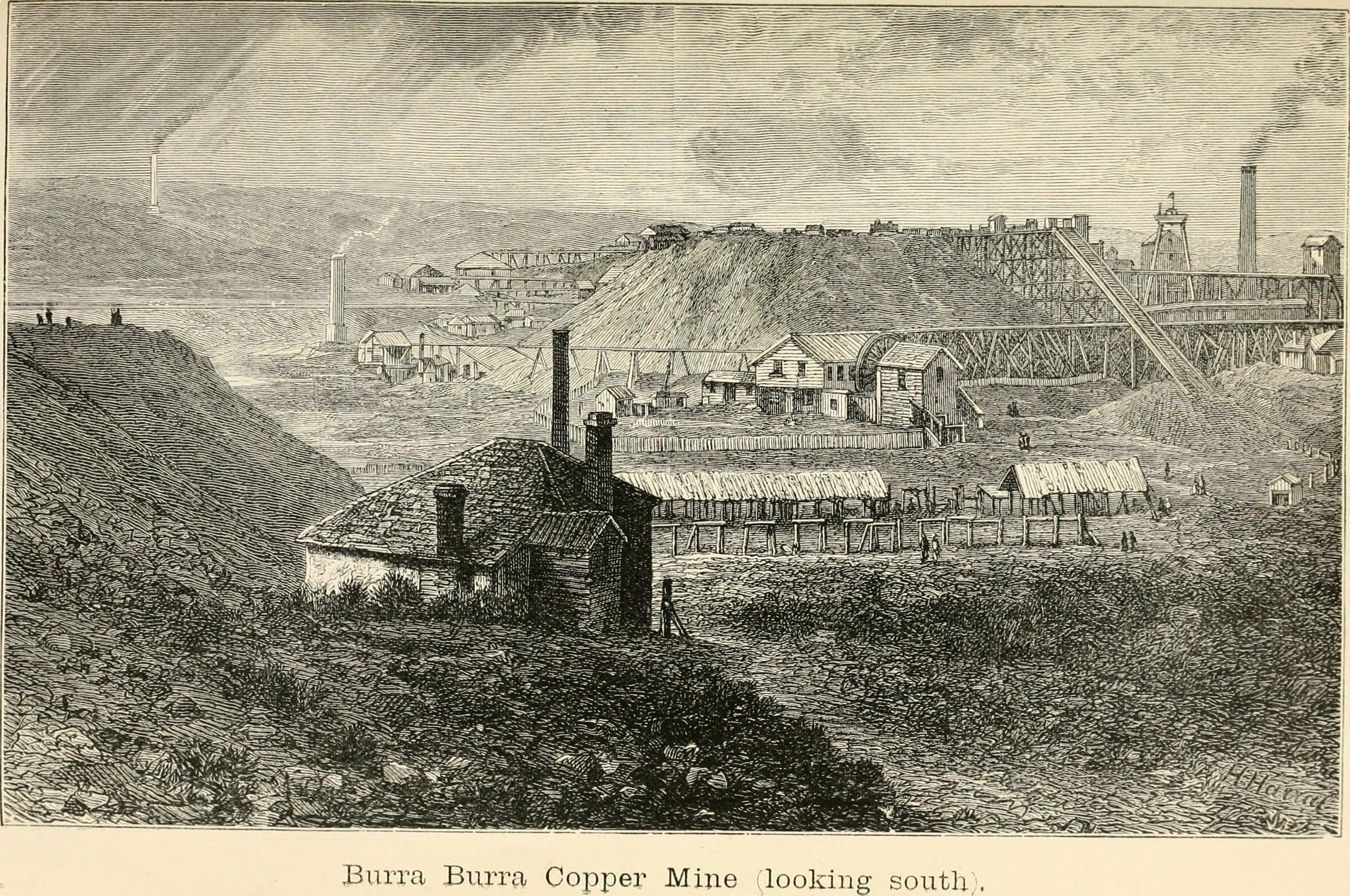
The ore zone at the mine was about 70 m wide, extending to a depth of about 100 m, and was very rich from the surface to 55 m. The enriched zone consisted of azurite, malachite, cuprite and secondary sulphides chalcolite and covellite, all formed during the oxidation of the ore body. Below the 30 Fathom Level the oxidised ore graded into primary sulphites, predominantly chalcopyrite.
The smelter workforce and their families arrived in Burra in late 1848 and construction of the smelting works soon commenced. By the end of March 1848, the first smelting house containing six reverberator furnaces each connected to a brick chimney up to 20 metres high was completed, and smelting operations commenced on 2 April 1849.
A drought in the summer of 1850-51, followed by flooding rains, unfortunately brought the works to a standstill due to a lack of fuel. It was not until September 1851 that smelting operations managed to resume full production. By this stage, the works consisted of a total of 21 furnaces and had a capacity of 100 tons of copper metal per weak, although it averaged about a third of this.
Prosperous times ahead seemed likely by the early 1852, until the discovery of gold in Victoria in mid-1851 changed everything. The subsequent gold rush in the later part of that year drained South Australia of a large proportion of its labour force. By early 1852, the Burra Smelting Works was the only one operating in South Australia. It continued limited smelting throughout the year, staggering along into 1853 before closing for the winter. During the closure, Leyshon, now aged 44 had time to travel Adelaide where he married Ann Curnow, 20 years his junior.
Labour shortages due to the gold rush continued throughout 1854 and 1855, with only 5 of the 19 furnaces capable of smelting working by March 1855 due to a lack of labourers to attend them. Only 200 men remained employed at the mine compared with 1,000 prior to the gold rush.
Eventually, in April 1855, the Burra mine recommenced operations, which promised a turnaround in the smelting operations. By now, however, there was a more pressing issue: the seven-year contracts of the original Welsh smelting staff from the Richardson were due to expire during the second half of the year. Leyshon was among them, resigning in January 1856 and taking up an appointment at the Kapunda Smelting Works.
The Burra Mine would continue operating until 1877, when falling world copper prices and the high cost of running the mine resulted in its closure. In total it produced approximately 50,000 tons of copper, proving to be of tremendous importance to the young and still struggling colony of South Australia, saving it from bankruptcy. The site today is recognised as one of the most significant mining heritage sites in Australia.

Kapunda Mine
Kapunda was the first commercial copper mine in Australia. Francis Dutton and Charles Bigot separately discovered copper here, on an unsurveyed land near the present town of Kapunda about 80 km north of Adelaide, in 1842. As neither owned the land, the two kept their discovery secret until they could purchase the 80-acre section around the outcrop at the government price of £1 per acre.
Mining operations commenced in January 1844 after samples sent to England for assay recorded strong results of 22.5% copper. Mining began with the removal of surface ore and had progressed to underground mining by the end of the year. By this stage, the mine had produced 600 tons, valued at £7,000.
The ore was initially exported to smelters at Swansea, Wales, but in early 1849 the manager of Kapunda, Captain Bagot, decided to build his own smelting works at the mine. By August, a smelting furnace had been erected and successfully reduced ore to regulus. Migrant Welsh smelters were subsequently employed and in early 1850 the commercial production of regulus begun. This was the first export of copper regulus from Australia.

Smelting operations were suspended in March 1852 due largely to the exodus of most of the mining and smelting workers to the Victorian diggings. Smelting did not resume until March 1855, under the superintendence of Thomas Hitchins. Under his management two additional reducing furnaces were added to the smelting works and covered by a substantial corrugated galvanised iron roof.
Hitchings returned to Ireland in mid-1856 and Leyshon Jones Sr. was recruited to manage the mine as the copper refiner and smelting superintendent. By May 1856, the Kapunda smelting works was in full operation under his supervision and a second refining furnace was under construction to enable production of refined copper. By August, several new furnaces were in course of erection to enable smelting of all the ore to fine copper, instead of exporting a part of the produce in the form of regulus.
During this time, Leyshon Sr. arranged for his son Leyson Jones Jr. to travel to South Australia and make his way to the Kapunda Mine, where he would learn the skills of a master copper refiner under his father’s management. In mid-1855 Leyshon Jr. had married Ann Williams of Briton Ferry in the Neath parish church, with their first child, Leyshon, born at Neath in June 1855.
There is no concrete evidence that Leyshon Jr. had any copper smelting experience prior to leaving Wales, although copper smelting had commenced at the Red Jacket Copper Work about one km from Birton Ferry Ironworks, so it is possible he gained experience there. In addition, the Miens Royal Copper Works and the Crown Copper Works where his father had probably worked as a copperman in the 1820s were only a few km upstream at Neath.
The Kapunda smelting works, under the management of Leyshon Jones Sr., reached peak production in 1850, with about 700 tons of copper smelt shipped to London. The success of the works sparked the interest of Walter Watson Hughes, the largest shareholder in the Wallaroo Mining Company, who promptly approached Jones with an offer to erect and superintend the smelting works at the Wallaroo mine early 1861. Enticed by a huge salary of £800, Jones accepted the offer, signing an agreement with the Wallaroo Mining Company in March 1861.
The Kapunda smelting works produced about 6700 tons of copper from 1849 until closure in 1866, when the mine was leased to a Scottish company which switched to open-cut mining methods and replaced smelting with a different treatment method. Copper prices fell in 1878 and the mine closed the following year, having extracted about 14,000 tons to the value of more than £1 million in total during its existence.
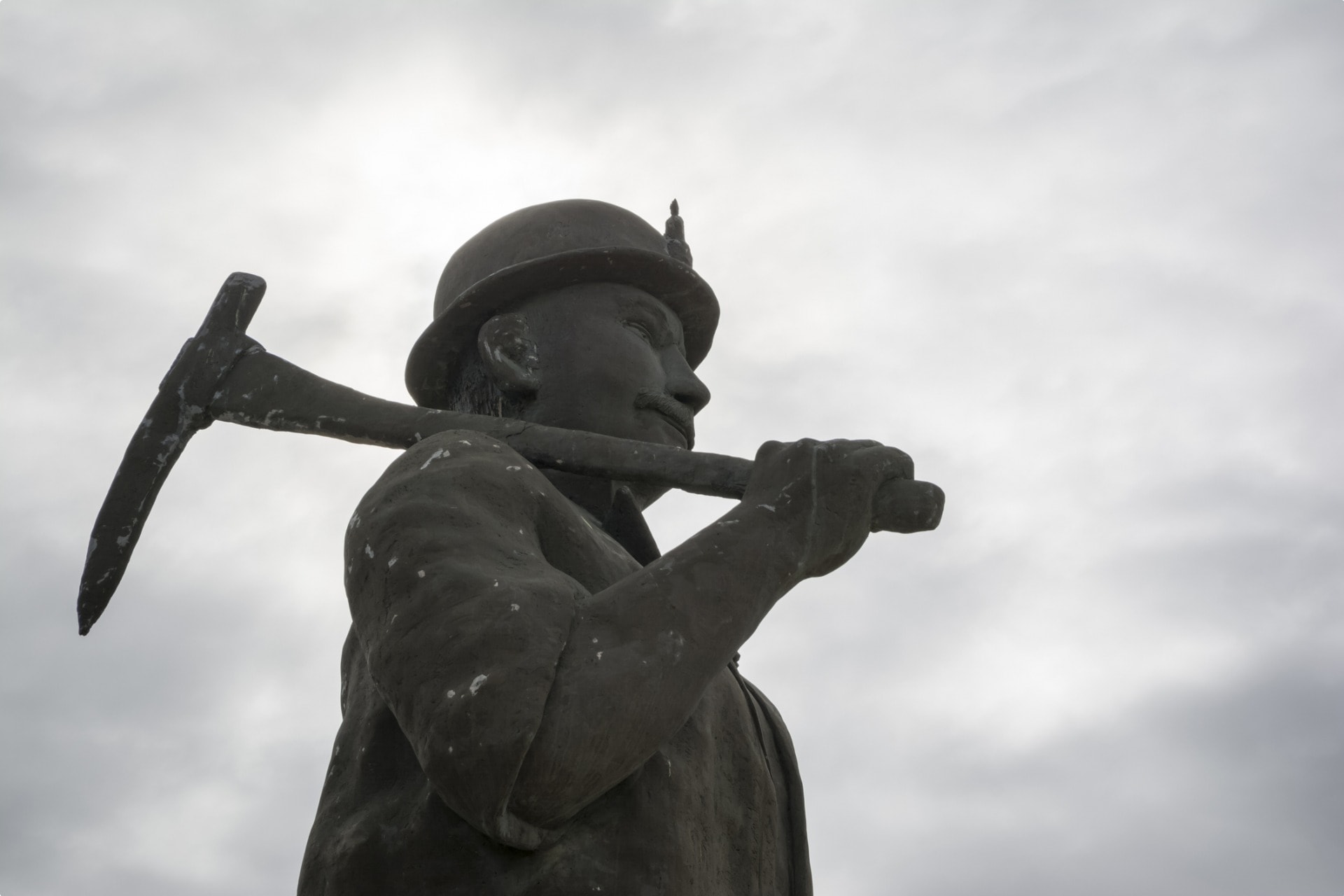
Wallaroo Mine
Shepard, James Boor, is credited with finding the first copper ore in the Wallaroo area in December 1859, discovered on the pastoral lease of Walter Watson Hughes and John Duncan. Hughes secured mining leases over the discovery, which was named the Wallaroo Mine, and in conjunction with Edler, Stirling and Co. (later Elder, Smith and Co.) formed the Wallaroo Mining and Smelting Company.
The Wallaroo orebody, which was very different to the large, oxidised Burra and Kapunda orebodies, was mined over a length of about 1000m and to a depth of 850m. The primary mineral assemblage of the orebody consisted mainly of chalcopyrite with pyrite and pyrrhotite and minor galena and sphalerite.
Thirty or forty men were reportedly working at the site by the end of the year and by August 1860 the Wallaroo Mine was already employing about 200 men with 500 tons valued at £8,000 raised. Recognising the advantage in smelting the ore nearby, Hughes constructed smelting works on the nearby coast in 1861.
Leyshon Jones Sr. proceeded to Wallaroo on April 1 to manage the new smelting works. The first stage of the smelting works consisted of ten smelting furnaces in a single line running northeast-southwest parallel to the coast and covered in 1862 by a shed 99 m long and 15 m wide. By early 1862, 11,370 tons of ore had been raised from the Wallaroo Mine of which 5370 tons had been shipped to Melbourne and Sydney. The remaining 6,000 tons remained at the smelting works which commenced operation in March.
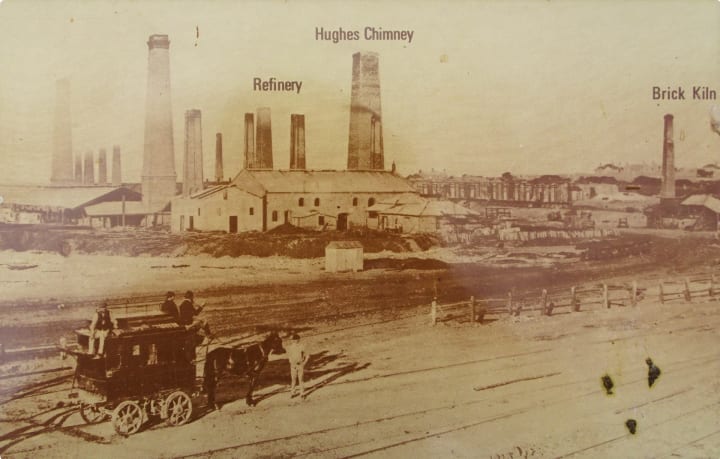
By April, 100 tons of fine copper had been produced at the smelting works and a further ten furnaces (12 eventually) were being erected at the northern end of the furnace shed. When the extension was completed in September 1862, it took the total length of the shed to 212 m with 22 furnaces. Four large calcining furnaces were then also erected to process the newly reached layer or sulphide ore. By 1863, the smelting works employed about 250 smeltermen and labours and produced 36 to 40 tons of copper per week.
During Leyshon’s tenure, however, dissatisfaction had been brewing amongst the Wallaroo Board. This finally reaching a head in February 1863 with Leyshon dismisses less than two years after he had been appointed.
The Board’s concerns initially related to the fire bricks lining the furnaces. The bricks, which had been made on site had failed when the furnaces reached the required smelting temperature and ran into a molten mass. The furnaces had to consequently be rebuilt using imported English bricks, which caused a significant delay in smelting operations. The full reason for Leyshon Sr.’s effective dismissal was never outlined by the board, however, although his salary perceived as exorbitant may have had something to do with it.
At the end of the three months’ notice of his termination, Leyshon Sr. moved to Adelaide where he established a business as a consulting copper smelter. Over the next 10 years, until his retirement, he undertook smelting contractions at mines throughout South Australia and even in Queensland.
Leyshon Jones Jr. at Wallaroo
In mid-1863 Leyshon Jones Jr. assumed the position of smelting works manager at the Wallaroo Mining and Smelting Company from his father. Under the management of Captain Jones, as he was now referred to in the Press, the early 1860s were very prosperous times for the Wallaroo works. Copper prices ranged from £80 to £100 per ton, and Wallaroo produced the best copper in the world, with prices generally fetching £10 more than its main competitors Chile and Cuba.
A bitter strike at the smelting works, however, abruptly ended Captain Jones’ honeymoon period as manager in January 1865. The smeltermen and labourers began the strike on new years’ eve 1864 in response to a reduction in wages of 6d. per charge. They also objected to overweight smelting charges. Within a few days the men added to their demands that Jones be dismissed and were joined by the refiners, complaining of oppressive working conditions.
The strike lasted 3 months, with the Board, determined to resist the demands of the striking smeltermen, eventually holding out. On 22 March, the men finally agreed to resume work unconditionally under Captain Jones.

By 1864, 26 furnaces were working, with copper production back to the pre-strike rate of 80 tons per week. The ill-feeling engendered during the strike seemed to have passed away.
With a new mandate to oppose his stamp on the operation of the smelting works, Jones was responsible for the first significant development in nearly four years with 8 new furnaces and two stacks erected in mid-1866. By 1868, the smelting works contained a total of 36 furnaces, making it the largest outside of Swansea. There were also 15 calciners which was increased to 21 in 1873. When all furnaces wee in operation the works could produce about 120 tons of copper per week.
For several reasons, though, this did not always happen. In June 1872, a number of furnaces were allowed to extinguish due to a lack of coal being shipped from Newcastle. In 1873, there was sufficient ore supply from all mines to keep the furnaces alight. And in 1875, another strike by the men at the roasting furnaces against the arbitrary conditions imposed by Mr Jones put our several ore furnaces and part of the refinery.
It was the falling price of copper from £115 per ton in 1872 to £75 in 1878, however, that had the largest impact on the smelting works. As a result, the labour force fell to about 100 and copper output to about 50 tons per week.
Ultimately, the falling prices would lead to Leyshon Jones Jr.’s dismissal. In 1877 Thomas Cloud replaced him as smelting works manager, the Board preferring a trained and educated manager who would be able to introduce new technology and bring about better efficiency and, hence, greater returns. In early 1878, Jones accepted a one-year contract to manage and upgrade the smelting works at the Great Cobar Mine in outback NSW, before he retired to Wallaroo where he lived until his death in 1912.
Leyshon Jones Jr. and his father had been responsible for establishing the first phrase of smelting operations in Wallaroo from 1861-90. This was characterised by the exclusive use of the Welsh method of smelting using small reverberatory furnaces that operated 24 hours a day. By the end of this phase, the value of ores sold from the Wallaroo mines was nearly £2.25 million.
It ended with the amalgamation of the Wallaroo and Moonta mining and Smelting company, resulting in the application of new technology and diversification. This was followed by a third phrase of operations from 1910-1923 characterised by the introduction of the Bessemer method of copper melting, which saw the reducing and roasting operations made continuous. The mines and smelters finally closed in 1923, but the town and port of Wallaroo has continued since with diverging industries and exports.
Tour of South Australia Copper Mines
Join one of Odyssey Traveller tours in South Australia to visit its historic copper mining region.
During our Tour of World Heritage Sites in the Southern States of Australia we visit the state heritage town of Burra, home to the Burra Burra Monster Mine. Burra, which calls itself ‘An Historic Copper Town and the Merino Capital of the World’, is a unique township. It did not become an official entity until 1940 when the tiny, separate mining communities of Aberdeen, New Aberdeen, Kooringa, Llwchwr, Redruth and Graham were drawn together under the name Burra. It was declared a State Heritage town in 1994 because of its outstanding historic buildings and the opportunity it offers for the visitor to understand a little of what life was like in a 19th century copper mining town.
We visit Burra on the thirteenth day of this 15-day journeying around the Southern edges of the Murray Darling basin and up to the upper southern part of this complex river basin north of Mildura. This escorted small group tour of South Australia provides the traveller the learning opportunity to gain an insight into Aboriginal habitation land management over some 40,000 years and then more recently the veneer of European settlement in the last two centuries on the landscape.
The itinerary over the 15 days is Adelaide to Adelaide, heading south east initially across Southern Australia to Victoria and Port Fairy. The group then continues up through central Western Victoria to Hamilton and then Naracoote and on into the lower part of the Murray Darling basin in Mildura, to Broken Hill and then back into South Australia to Adelaide via Burns.
During our Tour of Eyre & York Peninsulas and the Gawler Ranges we visit the historic towns of Wallaroo, Kadina, and Moonta, known as the ‘copper triangle’ on the copper coast. Copper was discovered in the area in 1859, with over 100 tons per week being produced by 1868. Copper production ceased in 1923, but the industry continues to shape the culture of the area which is still known as ‘Little Cornwall’ (or copper coast) thanks to the number of Cornish immigrants who worked in the copper industry.
This 15-day small group tour to the Yorke Peninsula, Eyre Peninsula, and the Gawler Ranges is designed for mature and senior travellers, travelling as a couple or single traveller, to discover the hidden gems of South Australia. You’re likely (rightly) familiar with the wine regions of the Barossa Valley, Clare Valley and McLaren Vale, the pristine scenery of Kangaroo Island, and the outback adventures offered on the stunning Flinders Ranges. Yet, the lesser-known western half of South Australia is a worthy rival for an Australia vacation, offering the pristine coasts of the Yorke Peninsula and Eyre Peninsula – often strikingly under developed compared to the East Coast of Australia – and the rugged landscapes of the Gawler Ranges. Delve deeper, and the visitor will find a fascinating journey and often unexpected South Australian history as they travel to this unique destination.
These tours, like all Odyssey Traveller small group tours, are limited to 15 people.
Our Australian tours are small group outback tours for seniors, designed for mature travellers who want an in-depth and authentic experience of their chosen destination. Since 1983, we have specialised in bringing Australian travellers to the world: now, our goal is to let you again rediscover your own country. We don’t just go from tourist stop to tourist stop, but aim to get off the beaten path, bringing to life some of the less-explored regions on your chosen Outback Australia tour. We want you to see Australia through new eyes as you travel, learning about geology, Aboriginal culture, native wildlife and local history as you pass through the ‘Wild West’ landscapes of Southern Australia.

Articles about Australia published by Odyssey Traveller:
- The Kimberley: A Definitive Guide
- Uncovering the Ancient History of Aboriginal Australia
- Aboriginal Land Use in the Mallee
- Understanding Aboriginal Aquaculture
- Mallee and Mulga: Two Iconic and Typically Inland Australian Plant Communities (By Dr. Sandy Scott).
- The Australian Outback: A Definitive Guide
- Yorke Peninsula, South Australia
For all the articles Odyssey Traveller has published for mature aged and senior travellers, click through on this link.
External articles to assist you on your visit to Australia:
- UNESCO: Budj Bim Cultural Landscape and Willandra Lakes Region
- Finding Mungo Man: the moment Australia’s story suddenly changed
- A 42,000-Year-Old Man Finally Goes Home
- Fish traps and stone houses: New archaeological insights into Gunditjmara use of the Budj Bim lava flow of southwest Victoria over the past 7000 years
- ‘A big jump’: People might have lived in Australia twice as long as we thought
- Mildura, Victoria
- Righting the wrongs of the Sunraysia sultana’s confusing history
- Burra, South Australia: Travel guide and things to do
Odyssey Traveller acknowledges Aboriginal and Torres Strait Islander peoples as the First Australians and Traditional Custodians of the lands where we live, learn and work. We pay our respects to Elders past, present, and emerging.
Related Tours

15 days
Sep, Dec, Jan, Feb, Mar +2Eyre & Yorke Peninsulas, and the Gawler Ranges
Visiting South Australia
Small group tour South Australia. Yorke, Eyre, and Gawler Ranges, discover the local history.
From A$10,350 AUD
View Tour
days
Mar, May, Aug, Sep, Oct +2Small group tour of World Heritage sites and more in the Southern States of Australia
Visiting New South Wales, South Australia
Discover the World Heritage Sites of the southern states of Australia travelling in a small group tour. A journey of learning around the southern edges of the Murray Darling basin and up to the upper southern part of this complex river basin north of Mildura. We start and end in Adelaide, stopping in Broken Hill, Mungo National Park and other significant locations.

days
Feb, Mar, May, Jul, Sep +2Guided small group motorcycle tour of World Heritage sites in Victoria and South Australia
Visiting
Discover the World Heritage Sites of the southern states of Australia travelling in a small group tour of like minded motorcyclists. A journey of learning around the southern edges of the Murray Darling basin and up to the upper southern part of this complex river basin north of Mildura. We start and end in Adelaide, stopping in Broken Hill, Mungo National Park and other significant locations.
